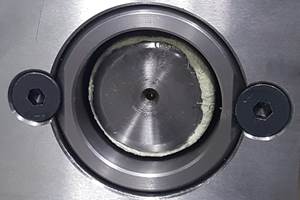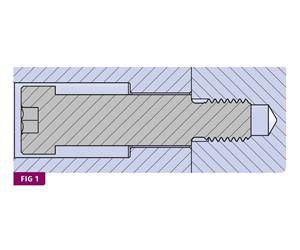Defect Position Analysis: What It Is, Why You Need It
There are so many new technological options in mold design, moldmaking, and molding today that it boggles the mind: We can simulate melt flows to anticipate difficulties.
There are so many new technological options in mold design, moldmaking, and molding today that it boggles the mind: We can simulate melt flows to anticipate difficulties. Then we can pre-empt problems by building the mold with special inserts to rotate the flows into double-stacked hot-runner manifolds through sequenced valve gates into pressure-monitored cavities fabricated
from a myriad of steels coated with exotic super-hard, lubricious, rust-proof platings applied with little heat and thinner than air. We can vent right through steel plates and cool tools with gas or boiling (yes, boiling) water.
Plastic parts can be inserted, overmolded, assembled, and painted right in the mold without secondary operations. Then these parts are ejected with a variety of lifters, cams, racks, poppit valves, screws, and cylinders.
These are exciting advances, to be sure, but also potential nightmares to someone who deals with this technological wizardry from the working side of a bench and has to consider reliability, maintenance costs, and how to keep such a mold running.
FOUR-LETTER WORD
Some companies that can’t afford all the latest innovations are still using old molds designed and built millions of cycles ago with cheap tooling that is hobbed, corroded, cracked, and worn; tooling that lacks basic mechanical guidance in the form of bushings, pins, or interlocks. No prints or CAD data exist to help understand design ideas that weren’t so hot to begin with, or how prototype molds were drafted into longtime service with unfulfilled promises of replacement or back-up molds that never seemed to materialize. This is the reality for a lot of shops: Molds that are pounded daily, over-run and under-maintained by “leaned”-down and stressed-out employees who keep one eye on the China boat docked in the harbor, just waiting for their production to falter.
How does a molder decide if expensive new technology will ultimately save his company money through increased and more reliable production or higher-quality parts? How does an engineer decide if a new mold should be built versus rebuilding the old one? How do you decide what is justified and what is overkill? The answer is a four-letter word: data.
MOLD OR BOAT ANCHOR?
As any surviving business today knows, what matters is bang for the buck. Making an accurate determination of how to spend your budgeted dollars must be directed by accurate, unbiased facts and figures, because you cannot improve a process that you can’t measure.
Here are three typical conditions used to cost-justify the decision to buy new, rebuild, or try out a new technology for the first time:
1) If you can’t keep up with projected yearly volume, even with the mold running reliably 24-7 with full cavitation at the optimum cycle time, then it’s obvious you need to invest in something. But even then, it would be a mistake simply to run out and order another mold exactly like the one you have now. There hasn’t been a mold built that can’t be improved from a performance or maintenance standpoint.
2) A radical change in product or part design that will require a major change in tooling geometry across all cavities often prompts the decision to build new plates as well. The result is an entire new mold.
3) If the mold does not run full cavitation or cannot get through a production run without unscheduled stoppages due to part-quality issues, then a knee-jerk reaction might be to replace the entire mold (or “boat anchor”), rather than collect accurate data on repeating part defects.
Companies often spend major dollars based more on perceived issues than actual performance (lost-production) and maintenance (corrective-action) costs. On the surface it might appear much simpler to build new than to try and figure out where to start out fixing the old. It doesn’t help when you cannot say exactly what is wrong with the mold other than “it doesn’t run very well.”
Before we react to such a vague indictment, we must be able to catagorize the issues into specific costs to understand if the problems as a whole are unmanageable or if the mold needs attention in only a few areas. But that’s not possible or practical without accurate information.
LOCATION IS EVERYTHING
When troubleshooting multicavity molds, the ability to view part defects in terms of the positions of individual cavities can reveal patterns that help pinpoint root causes of many performance issues. To implement effective corrective actions, you need to track part and mold defects by mold position, not just cavity I.D., which can change as tooling is replaced.
For instance if you have a 16-cavity mold, then each position is numbered 1 through 16 (stamped, etched, or hand-ground on plates and tooling). As part or mold defects occur and maintenance is tracked, you often will see repetitive patterns that point to specific areas or quadrants of the mold. This suggests there are conditions in these areas that influence process factors such as unbalanced mold fill.
This common issue can go undetected if defect positions are not charted. And charting defect positions can help uncover other issues like uneven cooling or heating and mechanical imbalances through excess tooling wear or galling and cocked or binding plates.
An example of a Defect Position Analysis Report for a typical four-cavity mold is shown in the accompanying chart. Defects in each of the four positions are reported in a different color. Many of the flash defects occur in position #2 (red).
Such data make you ask: Why does this position flash the most? Does the flash always occur in the same direction in the same area of the part? Are we flashing here because we must pack out the mold to keep position #4 from shorting?
By simply sorting and filtering the different data columns, you can relate the defect position data to other conditions such as press locations, different mold configurations, restricted or dirty cooling channels, inconsistent probe or manifold heaters, tooling stack-up (preload), plating, venting, alignment, and other mold design or wear issues that normally go undetected.
ABOUT THE AUTHOR
Steven Johnson worked as a toolmaker for 26 years, rebuilding and repairing multicavity molds for Calmar Inc. and then as mold-maintenance engineer for Hospira Inc., a medical device manufacturer. Today, he is the maintenance systems manager for Progressive Components and has his own business, MoldTrax in Ashland, Ohio, which designs and sells software for managing mold maintenance (www.moldtrax.com). He can be reached at steve@moldtrax.com or (419) 289-0281.
Related Content
What You Need to Know About Leader Pins and Bushings
There’s a lot more to these humble but essential mold components than you might suspect. Following the author’s tips could save much time, money and frustration.
Read MoreWhy Shoulder Bolts Are Too Important to Ignore (Part 2)
Follow these tips and tricks for a better design.
Read MoreDesign Your Tools for Moldability ... and Maintenance
In the initial design phase, when considering the structure and elements of the tool, are you designing them to be maintenance friendly? Canon Virginia has used this approach and preventive maintenance to make tool replacement a thing of the past. You can, too. Here’s how.
Read MoreOptimizing Pack & Hold Times for Hot-Runner & Valve-Gated Molds
Using scientific procedures will help you put an end to all that time-consuming trial and error. Part 1 of 2.
Read MoreRead Next
See Recyclers Close the Loop on Trade Show Production Scrap at NPE2024
A collaboration between show organizer PLASTICS, recycler CPR and size reduction experts WEIMA and Conair recovered and recycled all production scrap at NPE2024.
Read MoreLead the Conversation, Change the Conversation
Coverage of single-use plastics can be both misleading and demoralizing. Here are 10 tips for changing the perception of the plastics industry at your company and in your community.
Read MoreBeyond Prototypes: 8 Ways the Plastics Industry Is Using 3D Printing
Plastics processors are finding applications for 3D printing around the plant and across the supply chain. Here are 8 examples to look for at NPE2024.
Read More





















